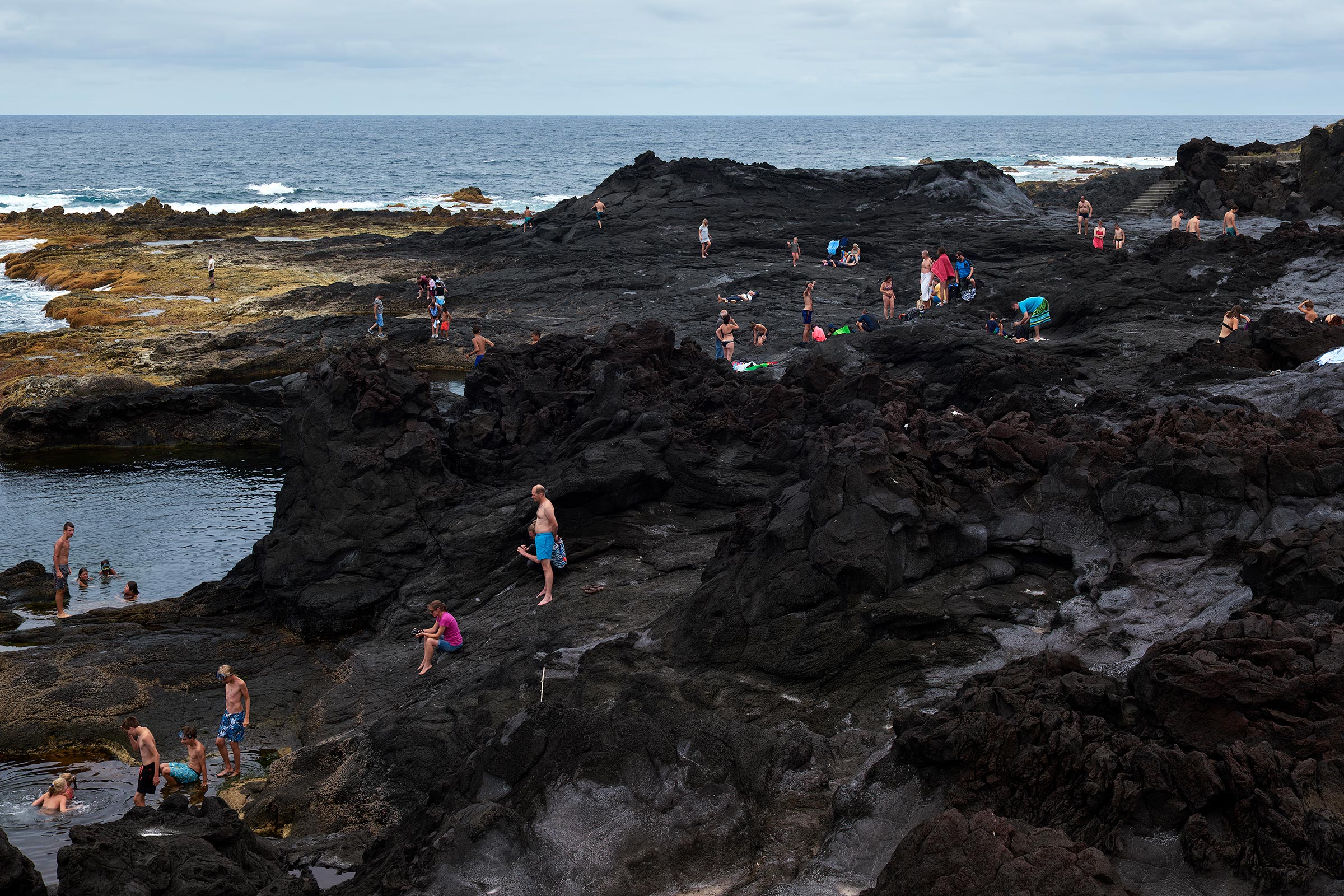
Massimo Vitali
Under This Sun
by Matteo Balduzzi
Location: Palazzo Ducale, Cortile degli Svizzeri 1
Opening days and hours:
Monday – Thursday from 15:00 to 19:00
Friday – Sunday from 10:00 to 19:00
Wearing a vermilion red swimming costume in perfect Baywatch style and surrounded by several dozen friends, on 13 August 2024 on the beach at Marina di Pietrasanta, Massimo Vitali celebrates with his usual irony the anniversary of his first photograph, taken in the same place during the summer of 1994. In the short essay that accompanied the first exhibition fully dedicated to the work the following year, Cesare Colombo already glimpsed in those first images a “possible new poetics of Massimo Vitali, where the artistic project merges with historical, social, and economic observation” and prophesied that in the series, the project would take on the value of an epochal testimony: “We can postpone the reading-interpretation to the coming years, entrust it to history,” he wrote. Now, if the comparison with the great History may seem challenging today and still slightly premature, it is nevertheless evident how the archive built up during 30 years of work, thanks to the constant application of such a rigorous method, can already represent a precious heritage for the specific history of Italian photography, but also for a broader narrative of a significant period in the country’s history. It is in this perspective that Lucca, his adopted city, and the Photolux festival ideally join the 30th anniversary celebrations and present to the public an exhibition that, starting precisely from the archive, traverses Massimo Vitali’s work in an unprecedented way through three distinct and complementary nuclei. The heart of the exhibition is a selection of images belonging to the famous beaches series. The photographs mark a time span from 1994 to the present day, telling, along with the aesthetic wonder of the places and the mysterious narratives that develop in the composition, how Italy and Italians have changed. Tattoos and mobile phones, bodies and gestures, costumes, towels, accessories, colours: the essentiality proper to the seaside condition that had already conquered Pasolini allows an infinite number of revealing details of our society to emerge and be compared over the decades. For the first time, a sampling of Vitali’s entire analogue archive is being presented, consisting of 4970 large-format negatives made between 1994 and 2016, which are currently being digitised and published online in their entirety, including the badly exposed plates, those never printed, and the different versions of the same subject. This is an unusual and courageous operation, made possible by the support of a PNRR project, through which the artist shares the inestimable heritage of images and information he has recorded with an ever-growing public of enthusiasts and the curious, as well as researchers and scholars, while at the same time revealing his working methods. The exhibition closes with a limited selection of Massimo Vitali’s best-known works, displayed in their most accomplished and precious version in terms of materials, formats, and assemblages, with that unmistakable aesthetic dimension that has allowed them to become part of private and museum collections all over the world. The images range across different themes and places, suggesting the complexity of Vitali’s entire oeuvre and confirming once again his great attention to the human condition and the extraordinary balance between distance and proximity, attention and rigour, classification and empathy.
BIOGRAPHY
Massimo Vitali was born in Como, Italy, in 1944. He moved to London after high-school, where he studied Photography at the London College of Printing. In the early 60’s he began working as a photojournalist, collaborating with magazines and agencies in Italy and Europe. It was during this time that he met Simon Guttman, the founder of the agency Report, who was to become fundamental in his growth. At the beginning of the 80’s, plagued by doubts about the ethics of photojournalism, he began working as a cinematographer for television and cinema. In 1995 he began his well-known series of Italian beach panoramas in light of drastic political changes in Italy. He lives and works in Lucca, Italy.

